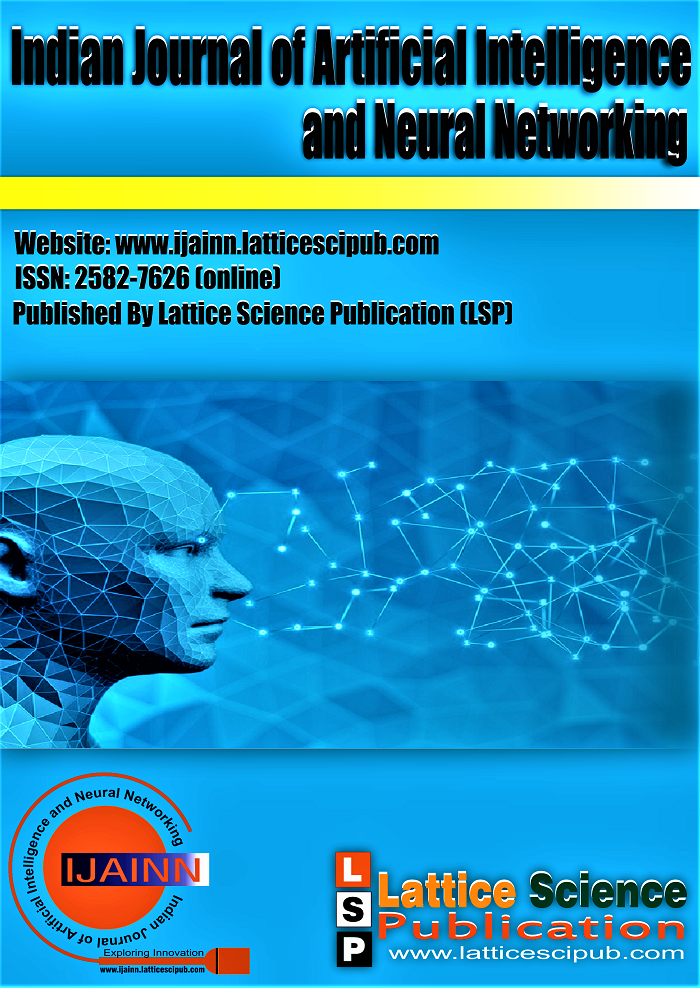Is the Ecosystem of Kolkata Sustainable?: Machine Learning Based Study on Air Quality Index
Main Article Content
Abstract
Timely and accurate forecasting of Air Quality Index (AQI) helps the Industries to select suitable control of air pollution measures. It helps people to reduce exposure in pollution. In this present age Air quality Index is one of the burning issues in India. The air contaminations are harmful for our biological system and also for the climate. To keep up the best air quality cross the country different types of air toxins are estimated through the air quality measuring standards. The aim of this research work is modelling air quality of a location with respect to time with the help of Machine Learning (ML). The proposed and developed model was emphasizes particularly in Kolkata, capital of the state West Bengal in India and the findings have direct implications to build & maintain a sustainable ecosystem over there.
Downloads
Article Details

This work is licensed under a Creative Commons Attribution-NonCommercial-NoDerivatives 4.0 International License.
How to Cite
References
Meng Dun (et al. 2020) ‘Short-Term Air Quality Prediction Based on Fractional Grey Linear Regression and Support Vector Machine’ Volume 2020 |ArticleID 8914501 | https://doi.org/10.1155/2020/8914501 https://doi.org/10.1155/2020/8914501
Akshaya A.C(etal.2019) ‘Indian Air Quality Prediction and Analysis using Machine Learning Volume 14, Number 11, 2019 (Special Issue) © Research India Publications. http://www.ripublication.com
J.K. Sethi and M.Mittal(2019), ‘A new feature selection method based on machine learning technique for air quality dataset’, Journal of Statistics & Management SystemsVol.22(2019), No.4, pp.697-705, DOI:10.1080/09720510.2019.1609726, @ Taylor & Francis. https://doi.org/10.1080/09720510.2019.1609726
Radhika M Patil (et al. 2020) ‘Prediction an air quality index data using machine learning and deep learning’ http://norma.ncirl.ie/5208/1/ruchitadattatraypatil.pdf
Naama Lang-Yona, Fatma Öztürk, Daniella Gat, Merve Aktürk, Emre Dikmen, Pavlos Zarmpas, Maria Tsagkaraki, Nikolaos Mihalopoulos, Aşkın Birgül, Perihan Binnur Kurt-Karakuş, Yinon Rudich, Links between airborne microbiome, meteorology, and chemical composition in northwestern Turkey, Science of The Total Environment,Volume 725,2020,ISSN 0048-9697, https://doi.org/10.1016/j.scitotenv.2020.138227
Khalid Nahar (et al.2020) ‘ Air Quality Index Using Machine.
W.Y.Hong, D.Koh and A.A.A.Mohtar (2021),” Statistical Analysis and Predictive Modeling of Air Pollutants Using Advanced Machine Learning Approaches”. Asia-Pacific Conference on Computer Science and Data Engineering (CSDE 2020) @IEEE, https://doi.org/10.1109/CSDE50874.2020.9411636
R.Sharma, G.Shilimkar and S.Pisal (2021),”Air Quality Prediction by Machine Learning”, International Journal of Scientific Research in Science and Technology, ISSN:2395-6011, https://doi.org/10.32628/IJSRST218396
Kumar K, Pande BP. Air pollution prediction with machine learning: a case study of Indian cities. Int J Environ Sci Technol (Tehran). 2023;20(5):5333-5348. doi: 10.1007/s13762-022-04241-5. Epub 2022 May 15. PMID: 35603096; PMCID: PMC9107909. https://doi.org/10.1007/s13762-022-04241-5
S. Bhattacharya and SK Shahnwaz ‘Using Machine Learning to Predict Air Quality Index in New Delhi’ https://arxiv.org/ftp/arxiv/papers/2112/2112.05753.pdf
D.Meng-Chuen Chen et al 2020 Environ. Res. Lett. 15 074021DOI 10.1088/1748-9326/ab8659
Nikam, S. S., & Dalvi, Prof. R. (2020). Fake News Detection on Social Media using Machine Learning Techniques. In International Journal of Innovative Technology and Exploring Engineering (Vol. 9, Issue 7, pp. 940–943). https://doi.org/10.35940/ijitee.g5428.059720
Radhamani, V., & Dalin, G. (2019). Significance of Artificial Intelligence and Machine Learning Techniques in Smart Cloud Computing: A Review. In International Journal of Soft Computing and Engineering (Vol. 9, Issue 3, pp. 1–7). https://doi.org/10.35940/ijsce.c3265.099319
Dogra, A., & Dr. Taqdir. (2019). Detecting Intrusion with High Accuracy: using Hybrid K-Multi Layer Perceptron. In International Journal of Recent Technology and Engineering (IJRTE) (Vol. 8, Issue 3, pp. 4994–4999). https://doi.org/10.35940/ijrte.c5645.098319
Chandrababu, M., & Moorthy, Dr. S. K. K. (2022). Proficient Machine Learning Techniques for a Secured Cloud Environment. In International Journal of Engineering and Advanced Technology (Vol. 11, Issue 6, pp. 74–81). https://doi.org/10.35940/ijeat.f3730.0811622
Sharma, P., & Site, S. (2022). A Comprehensive Study on Different Machine Learning Techniques to Predict Heart Disease. In Indian Journal of Artificial Intelligence and Neural Networking (Vol. 2, Issue 3, pp. 1–7). https://doi.org/10.54105/ijainn.c1046.042322





